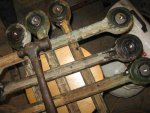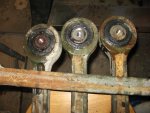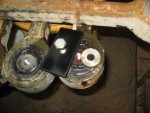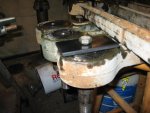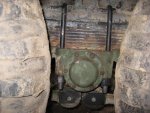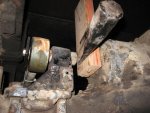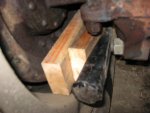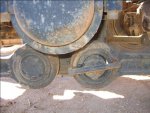- 2,960
- 30
- 48
- Location
- Tiro, Ohio
This is an idea I stole from the Canada deuces. Trimmed the rubber off the side of the torque rod ends, drilled and tapped 1/2-13 thread, then bolted on a plate with a spacer washer. Now if I lose a torque rod end, I don't lose an axle. I can get underneath with a prybar and see if any went bad, then replace later on, leaving the truck trail worthy.
Did all 12 ends on the M108, since I was replacing the dogbones anyways.
Had to trim the corners of the plates on some. Where the rods bolt to the center, there isn't much room.
Also added how I removed them, on the ones that you can't swing a hammer at. Log splitting wedge, piece of wood. Hammer in the wedge and most of them pop loose. Then if still stuck, a little torch heat would pop them.
Dennis
Did all 12 ends on the M108, since I was replacing the dogbones anyways.
Had to trim the corners of the plates on some. Where the rods bolt to the center, there isn't much room.
Also added how I removed them, on the ones that you can't swing a hammer at. Log splitting wedge, piece of wood. Hammer in the wedge and most of them pop loose. Then if still stuck, a little torch heat would pop them.
Dennis
Attachments
-
83.3 KB Views: 1,077
-
80 KB Views: 1,034
-
58.3 KB Views: 1,081
-
65.6 KB Views: 1,109
-
82.4 KB Views: 1,011
-
72.1 KB Views: 1,010
-
42 KB Views: 967
Last edited by a moderator:



